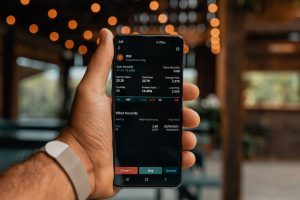Volatility is a term used to describe the level of uncertainty or risk involved in the price movement of a currency pair in the forex market. Forex traders use volatility to measure potential price variations in the market, which can either be beneficial or detrimental to their trading strategies. In this article, we will delve into the concept of volatility in forex trading, its importance, and how traders can use it to their advantage.
What is Volatility in Forex Trading?
Volatility refers to the degree and frequency of price movements in the forex market. It is a measure of how much the price of a currency pair fluctuates over a given period of time. Volatility is often expressed in terms of standard deviation or average true range (ATR). High volatility indicates that the price of a currency pair is rapidly changing, while low volatility indicates that the price is relatively stable.
Why is Volatility Important in Forex Trading?
Volatility is critical in forex trading because it affects the profitability and risk of a trader’s positions. High volatility often means greater potential profits, but it also means higher risk. Low volatility, on the other hand, may result in smaller profits but lower risk. Therefore, traders must be aware of the level of volatility in the forex market to make informed trading decisions.
Volatility also affects the timing of trade entries and exits. When the market is highly volatile, traders should adjust their strategies to account for the increased risk. This could mean using wider stop-loss orders to avoid being stopped out by sudden price movements or waiting for a more stable market before entering a trade.
How to Measure Volatility in Forex Trading
There are several methods for measuring volatility in forex trading. One of the most commonly used is the average true range (ATR) indicator. The ATR measures the average range of price movements over a specified period, typically 14 days. The higher the ATR value, the more volatile the market is considered to be.
Another method of measuring volatility is the Bollinger Bands indicator. The Bollinger Bands consist of three lines: a middle line that represents the moving average, and an upper and lower band that represents two standard deviations from the moving average. When the bands are close together, it indicates low volatility, while wider bands indicate higher volatility.
Traders can also use the implied volatility of options to gauge future volatility. The implied volatility is calculated from the price of an option and represents the market’s expectation of future price fluctuations. High implied volatility suggests that the market expects a significant price movement, while low implied volatility indicates an anticipated stable market.
How to Trade in a Volatile Forex Market
Trading in a volatile forex market requires a different approach than trading in a stable market. Traders must be prepared for sudden price movements and adjust their strategies accordingly. Here are some tips for trading in a volatile market:
1. Use stop-loss orders: In a volatile market, the risk of a sudden price movement is higher. Using stop-loss orders can help limit losses if the market moves against the trader’s position.
2. Trade with smaller positions: Trading with smaller positions can help reduce risk in a volatile market. This allows traders to manage their positions better and avoid large losses.
3. Use wider take-profit orders: In a volatile market, the potential for profit is higher. Using wider take-profit orders can help capture more significant price movements and maximize profits.
4. Use technical analysis: Technical analysis can help identify potential market movements and establish entry and exit points. Traders should use technical indicators to identify trends, support and resistance levels, and other signals to inform their trading decisions.
Conclusion
Volatility is a crucial factor in forex trading, affecting both risk and profitability. Traders must be aware of the level of volatility in the market and adjust their strategies accordingly. Measuring volatility can be done using different methods, such as ATR, Bollinger Bands, and implied volatility. Traders should use stop-loss orders, trade with smaller positions, use wider take-profit orders, and employ technical analysis to trade successfully in a volatile forex market.






